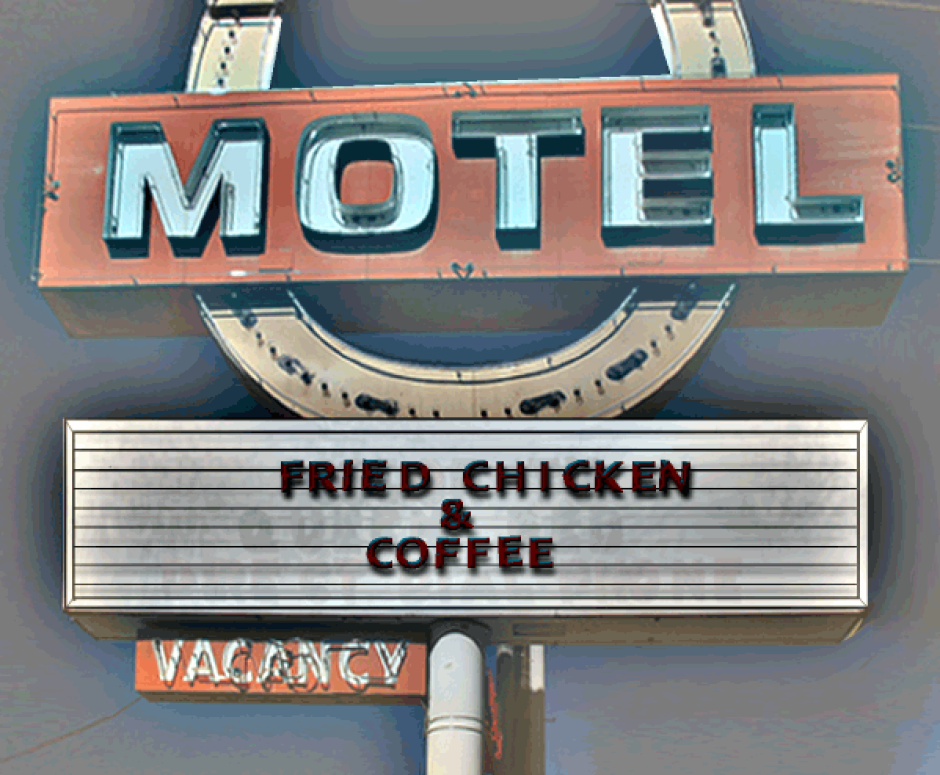Adriana Ivancich and Ernest Hemingway Beside a Stuffed Lion Head
I place this circle of stones for the living;
May we and others not go beyond it in life;
May we all live to a hundred autumns,
Driving death away from this heap.
—“Funerary Customs, Hindu” from Death and the Afterlife: A Cultural Encyclopedia
The picture was taken at Finca Vigia, San Francisco de Paula, Cuba.
And had Hemingway been asked his relationship status on Facebook—
110 years old, headless—he might have clicked, It’s complicated
because smiling Adriana Ivancich was his inamorata and muse.
He was married at the time. Reading books on Hinduism that said
we don’t die when we die. Death is just a door. So we go on and on.
All right, but then what about this lion? Baring wicked-sharp incisors,
the beast takes up a good third of the photograph. Where did this lion go
after an American on safari in East Africa in 1954 had stilled its heart?
So what if Ernest loved two women in denial of the other’s existence.
So what if some as-yet-unstuffed lion did that with lionesses. Lions
aren’t monogamous. Don’t men and women and lions go forward
into death and into light that is mostly bright and brittle forever
and wants to tell us something important, and can’t. Won’t.
If you ask why I like Hemingway enough to pause on the picture,
I might say that he reminds me of every tortured man I have known.
Of my dying father. Who liked to talk about Paul Newman movies:
Do you remember the time I took you to the Heath Drive-In to see
Butch Cassidy & The Sundance Kid? What was with the last scene?
In his Stratolounger recliner with the replacement release handle,
the model manufactured by Caye Home Furnishings, the whole
mechanism guaranteed for life, he would cough. Spit. Cough.
The last days and nights he barely slept. We stayed up. Talked.
He was quiet. And I read To Have and Have Not. He got worse.
And before the last coughing fit, he asked about the book. I said
something. He listened. Looked at me. Choked hard. And died.
The dark in his eyes that same manifest dark in the lion’s eyes
as if what departs like that leaves nothing. A token, a trophy.
Fire and the Fury
After midnight in July, headlights rake the orchard,
our tenancy beneath rows of obscenely fruiting trees,
the army-surplus tent we leave to lob apples at cars,
and I wonder if something in us is made of fireworks,
being young, or maybe not quite ageless or wearing
forever like a T‑shirt, but made for breathless escapes.
Of all sounds, the noises of cornered boys most pulses
with the operational definition of Fucked. My cousin
Jim petitions an unspecified God. Says his neck throbs,
having been garrotted by a swimming-pool power cord.
His back aches from the fall, he says. A shoulder too.
Having to hide out like this on the 4th is unbearable.
Branchings spill into vortices of spiraling shadow,
sign and countersign in the false dawn of headlights.
A man is quarreling with Jim’s brother Bob; and Bob
is about to save himself (and us) with talk of parents,
grandiloquent half-truths voiced in light detonating
like bottle rockets under a heaven of deliverance.
 Roy Bentley is the author of four books and several chapbooks. Poems have appeared in The Southern Review, Blackbird, Shenandoah, Indiana Review, Prairie Schooner, North American Review and elsewhere—recently, in the anthologies New Poetry from the Midwest and Every River on Earth. He has received a Creative Writing Fellowship from the NEA (in poetry), as well as fellowships from the arts councils of Ohio and Florida. He makes his home near the Jersey Shore.
Roy Bentley is the author of four books and several chapbooks. Poems have appeared in The Southern Review, Blackbird, Shenandoah, Indiana Review, Prairie Schooner, North American Review and elsewhere—recently, in the anthologies New Poetry from the Midwest and Every River on Earth. He has received a Creative Writing Fellowship from the NEA (in poetry), as well as fellowships from the arts councils of Ohio and Florida. He makes his home near the Jersey Shore.





